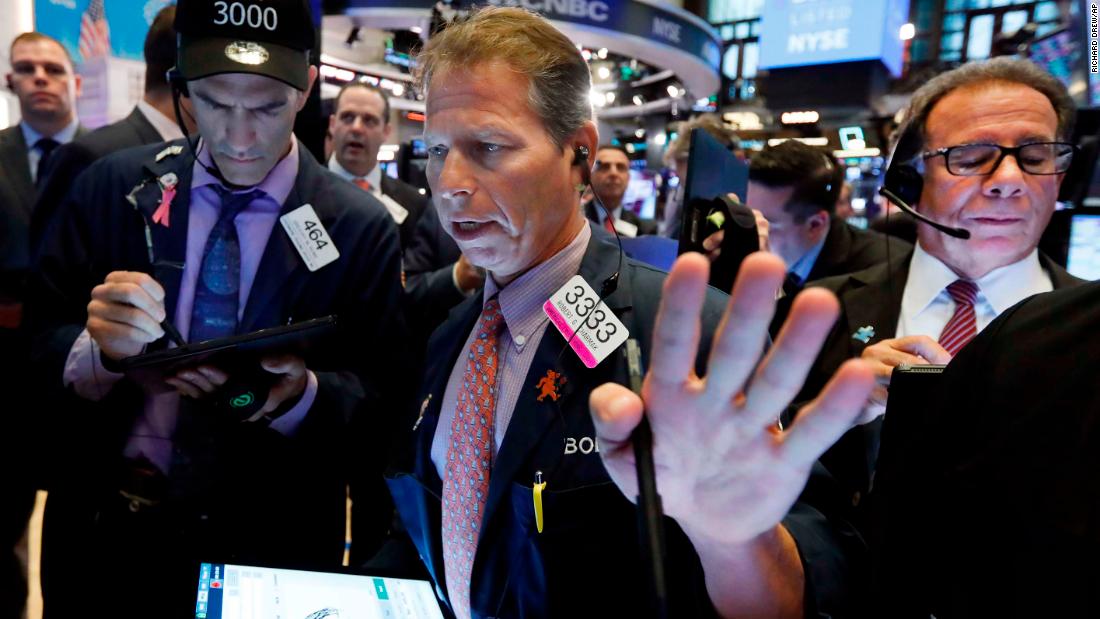
U.S. President Donald Trump attends a bilateral meeting with China's President Xi Jinping during the G-20 leaders summit in Osaka, Japan, June 29, 2019.
Kevin Lamarque | Reuters
For the first time in 25 years, the U.S. Treasury Department on Monday named China a currency manipulator — a move that looks set to worsen a trade war that has already dragged on the global economy.
That action from President Donald Trump's administration came after China allowed its currency, the yuan, to weaken to more than 7 per U.S. dollar — a level many analysts and investors considered important. Trump, for his part, called the slide in the Chinese yuan "a major violation."
Some analysts said Beijing's move to weaken the yuan was clearly made in retaliation to Trump's latest tariff threat. The president announced last week that Washington will slap 10% tariffs on $300 billion of Chinese goods starting Sept. 1. If that goes ahead, the U.S. will have imposed elevated tariffs on all goods it buys from China.
The U.S. and China — the world's top two economies — have over the past year been locked in a trade war that has spilled into areas such as technology and now currency. Trump's tariff threat last week came just after both sides resumed negotiations for a deal, which some experts said have become increasingly difficult to conclude.
Beijing, for its part, looks like it has "given up on the trade negotiation," David Cui, head of China equity strategy at Bank of America Merrill Lynch, told CNBC's "Street Signs" on Tuesday.
He explained that Beijing letting the Chinese yuan slide past 7 is "a big event" which adds to signs of "a protracted conflict" between the two countries.
On Monday, the Chinese central bank officially denied that it's decision to allow the yuan to weaken is meant as a response to American tariffs.
The number 7
China has maintained a tighter grip on the yuan compared to the way other major economies manage their currencies.
In recent years, Chinese authorities have loosened some controls on the currency, although the central bank — the People's Bank of China — only allows the yuan to move 2% in either direction of a "midpoint" that it decides daily. The PBOC is also known for its willingness to intervene in the foreign exchange market to buy or sell yuan to keep it within a desired range.
The Chinese authorities have not let the currency weaken past the 7 yuan-per-dollar threshold since the global financial crisis. In fact, they have in previous years — such as in 2016 — burned a substantial portion of their foreign reserves to defend the currency from breaching that mark.
It's for that reason that currency experts have long viewed that mark as a psychological important level. Breaching 7 yuan per dollar is a crucial development partly because investors don't know how much more weakness the PBOC is willing to tolerate, so they could sell their investments in China to curb losses — and thereby trigger significant capital outflows from the country.
One day after the Chinese yuan went past that important mark, the PBOC on Tuesday set a midpoint that would allow the currency to weaken to 7.1 against the U.S. dollar.
'Currency manipulator'
The U.S. has for years accused Beijing of artificially keeping the yuan weak in order to make Chinese exports cheaper. The administration of President Bill Clinton named China a "currency manipulator" in 1994.
But China has avoided that label ever since, although it had consistently featured in the "watch list" of the U.S. Treasury's semi-annual review of currency practices by America's trading partners. The watch list features countries that have been deemed to warrant close monitoring because they may be manipulating their respective currencies.
In the latest American review in May, China met only one of the three currency manipulation criteria under the Trade Facilitation and Trade Enforcement Act of 2015: Its "extremely large, persistent, and growing" bilateral goods trade surplus with the U.S.
But the U.S. on Monday slapped the label on China under an older law — the Omnibus Foreign Trade and Competitiveness Act of 1988. That offers "greater subjectivity" in naming a country a currency manipulator, said Khoon Goh, head of Asia research at Australian bank ANZ.
Under the 1988 act, the U.S. will have to negotiate with China or take its case to the International Monetary Fund. Potential penalties by the U.S. include:
- Banning the Overseas Private Investment Corporation — an American government agency that invests in developing countries — from financing China.
- Excluding China from U.S. government procurement contracts.
China is not a major recipient of government contracts or OPIC financing, so the currency manipulator label is mostly symbolic without "major consequences on its own," Goldman Sachs analysts said in a Tuesday report.
Trade war escalation
Still, the move by the U.S. Treasury marked further escalation in tensions between Washington and Beijing, according to analysts from Citi Research.
The analysts wrote in a Tuesday note they expect the U.S. to raise the tariff rate on the just-announced $300 billion tranche from 10% to 25% "as soon as next month." That's on top of the 25% tariffs already on $250 billion of U.S. imports from China — to which Beijing had retaliated with elevated levies on billions of American products that it buys.
China imports a smaller amount of goods from the U.S. compared to what it exports, so the Asian country has limited products on which it can slap additional tariffs. Some experts have suggested that China could dump its massive holdings of U.S. Treasurys, but such a move could harm Beijing too.
"The upshot is that China has few good options with which to directly hit back at the US. As such, policymakers are likely to focus on broader measures to offset the drag from tariffs," Julian Evans-Pritchard, senior China economist at consultancy Capital Economics, wrote in a Monday note.
Allowing the yuan to depreciate is one such measure. A weaker yuan makes Chinese goods relatively cheaper to buyers outside the country, so that could offset the additional levies that American importers must pay as a result of Trump's tariffs. Such a move also makes the U.S. dollar stronger in relative terms — which the American president has said he dislikes.
—Reuters contributed to this report.
Correction: The story has been updated to reflect the correct time frame since the U.S. named China a currency manipulator.
https://www.cnbc.com/2019/08/06/us-china-trade-war-currency-manipulator-tag-after-yuan-passes-7-level.html
2019-08-06 07:42:31Z
52780345840537







